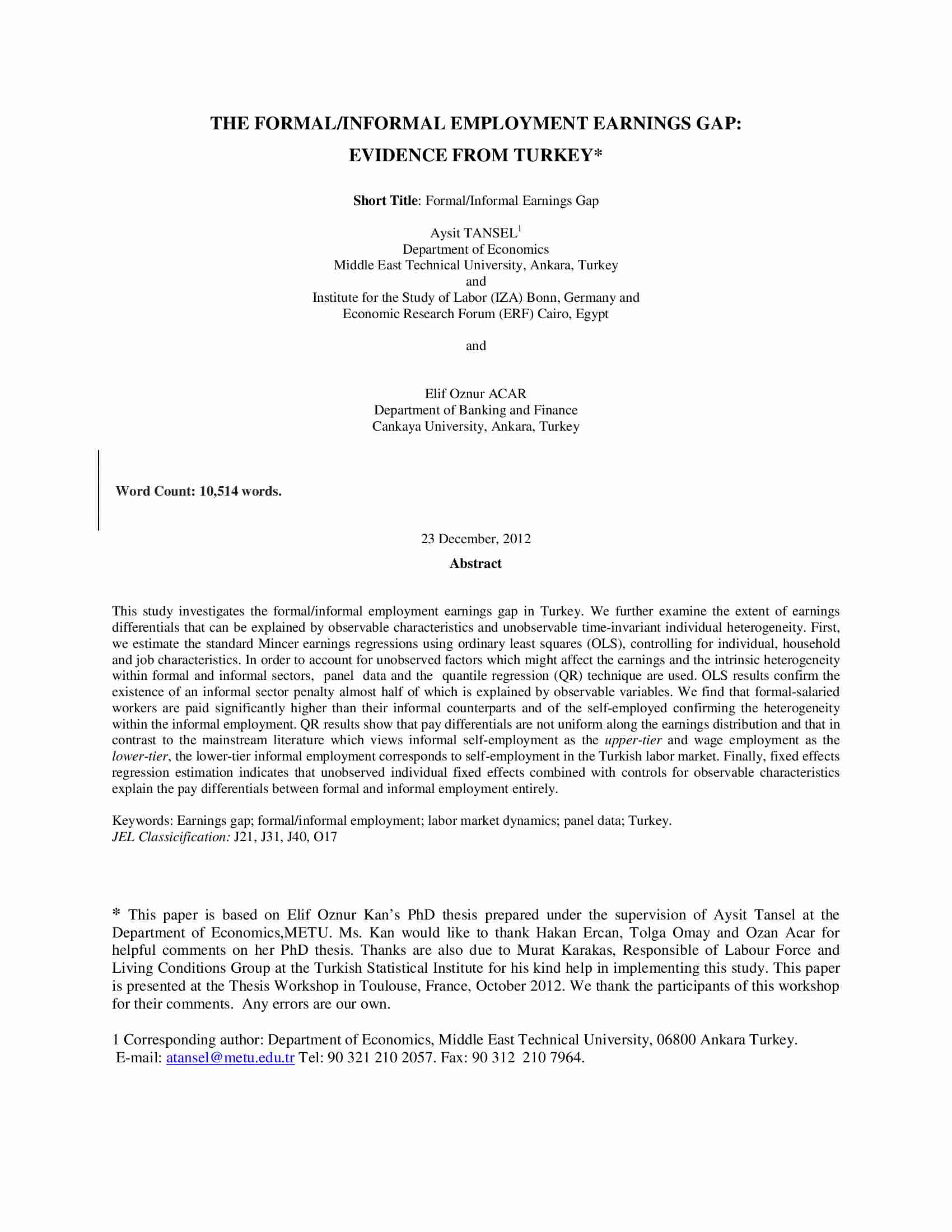The Formal/Informal Employment Earnings Gap: Evidence from Turkey
Abstract:
This study investigates the formal/informal employment earnings gap in Turkey. We further examine the extent of earnings differentials that can be explained by observable characteristics and unobservable time-invariant individual heterogeneity. First, we estimate the standard Mincer earnings regressions using ordinary least squares (OLS), controlling for individual, household and job characteristics. In order to account for unobserved factors which might affect the earnings and the intrinsic heterogeneity within formal and informal sectors, panel data and the quantile regression (QR) technique are used. OLS results confirm the existence of an informal sector penalty almost half of which is explained by observable variables. We find that formal-salaried workers are paid significantly higher than their informal counterparts and of the self-employed confirming the heterogeneity within the informal employment. QR results show that pay differentials are not uniform along the earnings distribution and that in contrast to the mainstream literature which views informal self-employment as the upper-tier and wage employment as the lower-tier, the lower-tier informal employment corresponds to self-employment in the Turkish labor market. Finally, fixed effects regression estimation indicates that unobserved individual fixed effects combined with controls for observable characteristics explain the pay differentials between formal and informal employment entirely.
View list of all: Research Reports

